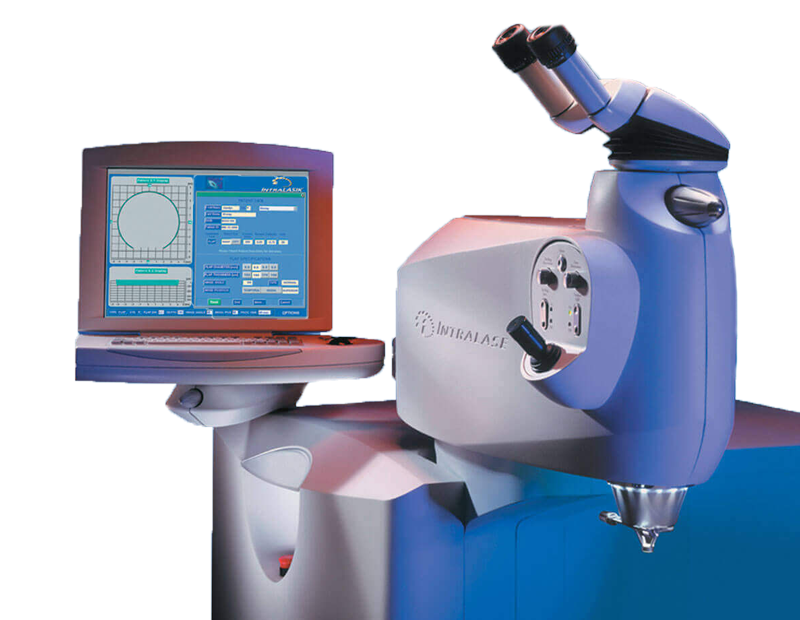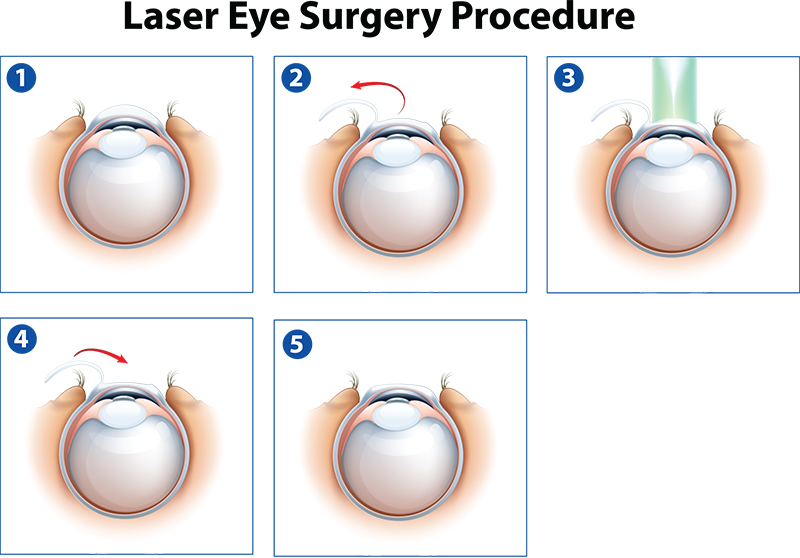

Imagine being able to see without the dependence of glasses and contacts. Your lifestyle will be free of those hassles and you can do sports like basketball, swimming, surfing and see the alarm clock at night. Our LASIK patients are truly happy to be able to see without this burden of glasses and have written us numerous testimonials. Please feel free to visit our testimonials page to hear what they have to say. Contact us for a FREE LASIK consultation at our convenient Long Beach eye center location.
Please view our patient testimonials to learn about the LASIK experience with Eye Physicians of Long Beach.

Our LASIK technology is state of the art VISX and Intralase technology. The IntraLase Method is a 100% blade-free technique. The first step in the LASIK procedure is creating the corneal flap. There are two ways to make this flap, a blade or a laser. At Eye Physicians of Long Beach, flaps are created exclusively using the IntraLase™ FS laser. In research studies, patients prefer bladeless LASIK eye surgery over traditional LASIK. There are substantial benefits. The laser provides our surgeons with better control of the depth and architecture of the flap. The cut is also smoother, which results in faster healing.
In the second step of the LASIK procedure, an excimer laser is used on the inner cornea to correct vision. At Eye Physicians of Long Beach, LASIK correction is guided by a computer. this computer is programmed with your own unique corneal characteristics using the VISX Star 4 laser with Iris Registration. A wavescan is used to make an individual blueprint of your eyes. This blueprint will guide your laser correction, making it a truly customized procedure. VISX technology is the most popular excimer laser technology in the world. It has an excellent safety and results track record.
At Eye Physicians of Long Beach, our doctors will only perform this surgery if you are a qualified candidate. Your candidacy is based on calculations made through a series of state-of-the-art eye tests. Our doctors have found that only about 80% of candidates should have LASIK.
Our doctors are general ophthalmologists who have extensive experience in all refractive options; if LASIK is not the ideal procedure for you, they will recommend one that is.
With LASIK you can have great vision without glasses or contacts! Learn more about your candidacy by taking our free LASIK self-test.

The day of surgery you will be welcomed and made comfortable by our surgical team. You will be awake during the LASIK procedure; however, you will be given medicines that help you relax. Generally, you shouldn’t experience any pain or discomfort.
To begin, the doctor applies anesthetic eye drops to numb the eye for surgery. A lid speculum is placed between your eyelids to prevent blinking. Finally, a suction ring, designed to hold the eye steady, is applied.
Using the IntraLase™ FS laser, a thin opening in your cornea, called a corneal flap, is created. The doctor will describe what is happening at each stage of the procedure so you know everything is proceeding as planned.
Next, the surgeon gently moves the flap to the side exposing the corneal tissue. At this point, the eye is ready to receive the excimer laser that will correct the cornea. When the laser is applied, eye tissue is separated by the cool ultraviolet laser, actually reshaping the front part of the eye.
You don’t have to worry about blinking. There is an instrument that keeps the eye open. You also don’t have to worry about movement. Our laser is equipped with iris registration and a tracker so that the laser follows your eye through the procedure.
Once the treatment is over, the flap is repositioned over the treated area. The doctor will apply several eye drops to help initiate the healing process. A fluid wave is used to stretch the flap after putting it back.
When you first sit up, the vision will be a lot better but will continue to improve gradually. It is usually excellent by the next day.
During your consultation, you will have all the time you need to ask questions. You will be given your doctor’s cell phone number in case any additional questions come up later.

The LASIK procedure is not without risks, however, it is important to remember wearing contacts comes with risks as well. Contact lenses require time and meticulous attention to ensure proper cleaning and to avoid infection. Infections with contacts do occur, so considering this risk, the hassle of contacts and the lifetime costs of wearing contacts, you should learn about the LASIK procedure.